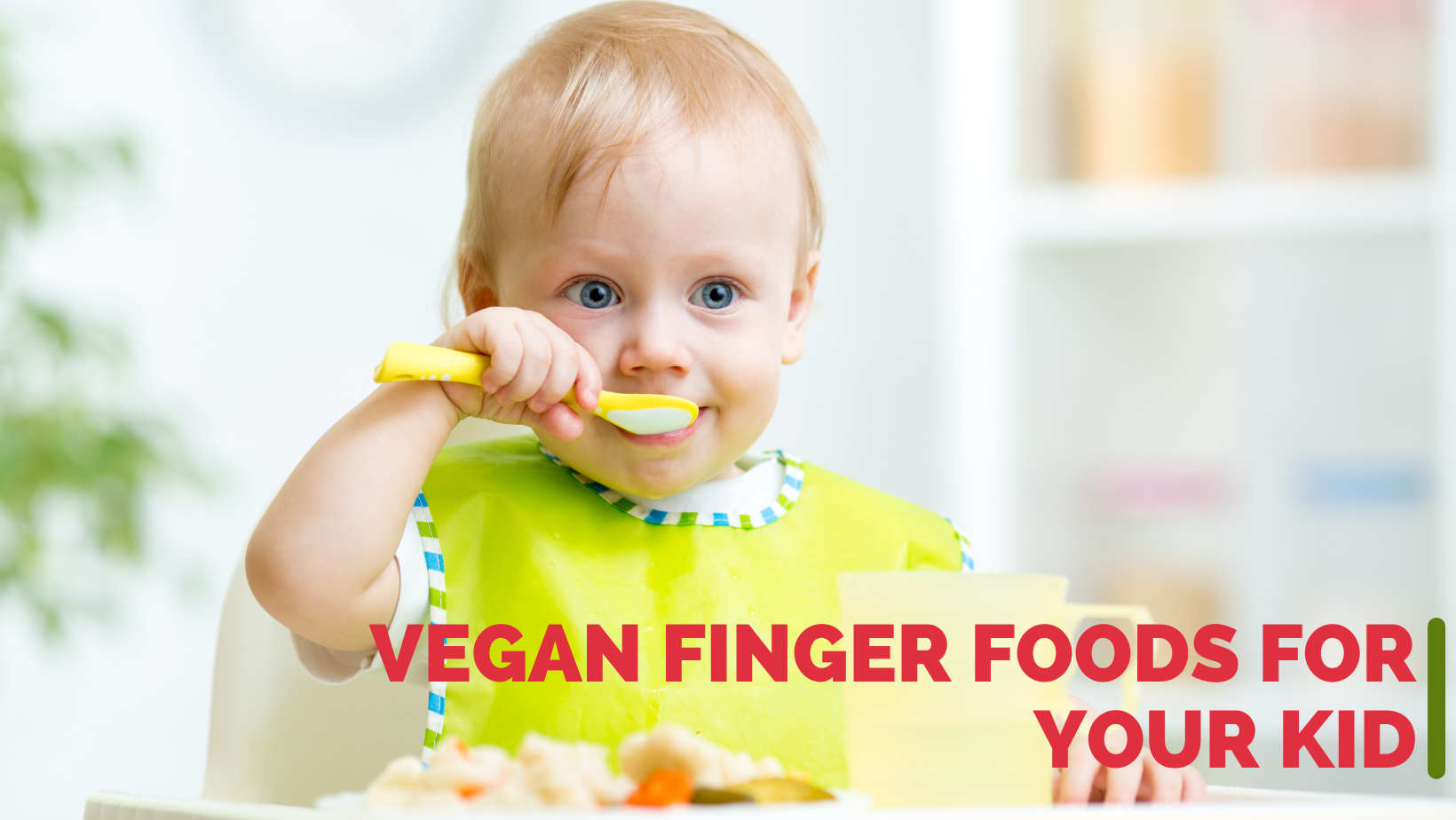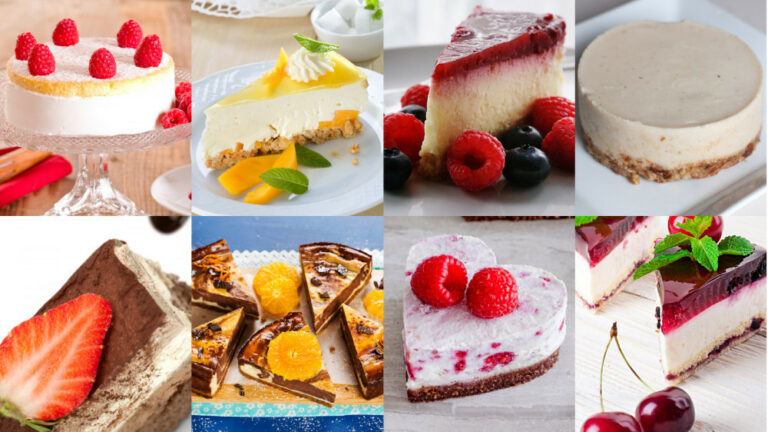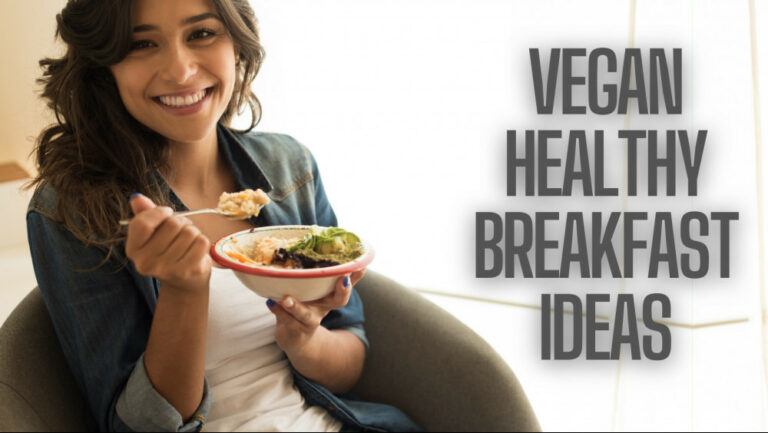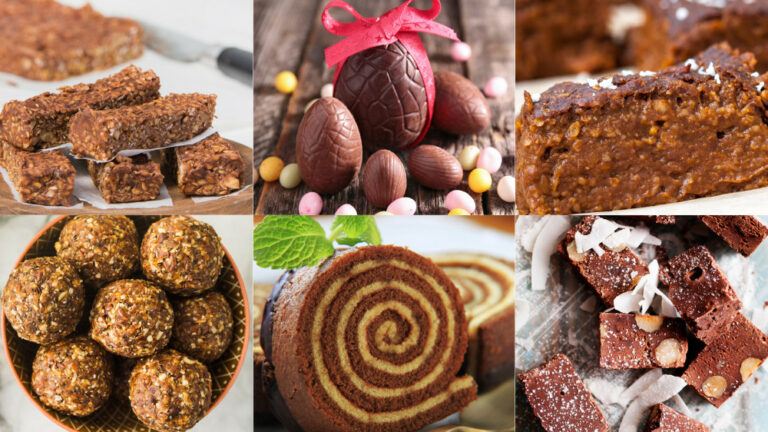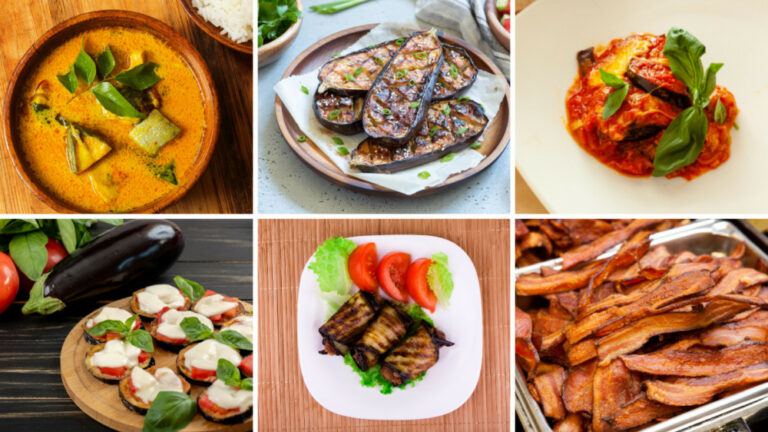21 Best Vegan Finger Foods For Your Kids
21 Best Vegan Finger Foods For Your Kids
Whether trying baby-led weaning or transitioning your baby away from purées, finger foods are a terrific method to encourage your little one to explore and enjoy solids. You can start giving him food to hold and eat when he is six months old.
Because his fine motor skills are still developing, you'll have to feed him vast portions of food he can grab with his fist.
Your kid will then develop a pincer grip, allowing him to take up food between his thumb and fingers at roughly eight to ten months and eat more independently.
If your baby is already eating puréed or mashed foods, you'll want to introduce vegan finger foods gradually, possibly as a snack or with his main meal.
Mini rice cakes, chopped bananas or berries, steamed vegetables, or toast squares are good options.
You can progressively introduce vegan finger foods at most meals as he becomes more proficient so that by his first birthday, he can feed himself. If your child is eating, keep an eye on him in case he chokes.
How To Introduce Your Baby To New Vegan Finger Foods
When babies first start eating finger foods, breast milk and formula will remain their primary sources of nutrients, followed by purees.
Initially, you should spoon-feed your infant, but “during the feeding process, they should also be permitted to feed themselves,” according to Dietz.
Place finger food on her high-chair tray and let her try to eat it between spoonfuls of food you're giving her. If she becomes irritated, go ahead and assist her.
Most importantly, McCormack recommends paying attention to your child's cues and “allowing your kid to be the lead.” Step back and try again later if he doesn't reply positively.
However, according to Dietz, when babies try anything new, their faces wrinkle up, making it appear like they don't enjoy it.
It can take them up to 20 repetitions to become accustomed to various foods. “Parents shouldn't force meals on their children, but they should keep giving,” Dietz says.
McCormack also recommends starting with thicker purees with a touch of texture to ease into finger foods.
“To help your baby get adjusted to the new textures in her mouth, alternate bites of the smooth puree with bites of a somewhat thicker or mashed food,” she suggests.
Keep in mind that this is a messy procedure. According to Dietz, parents should cover the floor with newspaper or an easy-to-clean vinyl tablecloth because it will be a long time before your child learns to put more food in his mouth than on the floor.
Check to see whether your baby is ready to start eating finger foods by looking for the following signs:
- They have good head and trunk control.
- Sitting with only a little help
- Taking their hands and toys and putting them in their mouths.
- Food is a priority, as evidenced by reaching or leaning toward food.
How Do I Get My Baby To Eat Finger Foods?
Are you ready to introduce your infant to solid finger meals but unsure where to begin? Here are some practical actions to ensure a successful first feeding.
- Always feed your infant in a highchair or booster with adequate trunk, hip, and foot support. Ascertain that they are using a footrest and that their hips and knees are as near to 90 degrees as possible.
- Start with 1-3 foods at a time to keep things easy. Avoid putting excessive amounts of food on the tray or plate. Because we eat with both our lips and our eyes, too much food can be visually overwhelming for a beginner eater.
- It's fine to eat right from the highchair tray or table. Using the cute silicone divider plates and bowls you received as baby shower gifts is also acceptable, but it's not required.
- Soft and ripe fruits, such as bananas or avocados, or soft-cooked vegetables, such as sweet potatoes or carrots, are good first foods. Cut foods into stick-shaped pieces about the width of two adult fingers to simplify grabbing. Alternatively, give the baby a spoon with one of the following items pureed on it. Below are some of our favourite baby-led weaning first foods.
- Always pay attention to your baby's indications and feed accordingly. Allow your baby to choose whether or not to consume a portion of food and how much she wants to eat. Allowing your infant to experience and express hunger and fullness will help them develop healthy eating habits later in life.
Vegan Finger Food Meals For Kids
1. Grilled Peaches
Peaches can be your child's favourite finger food. Because they are soft fruits, you can serve them directly, or if you add extra flavour, the fruit can be tastier for your kids.
- Brush the peaches with butter. Place them on a medium-hot grill and turn once grill marks form. Continue to brush with butter as you grill.
- Brush a fresh peach with melted vegan butter before serving.
- Allow grilled peaches to cool before serving.
2. Biscuits For Teething And Lightly Toasted Bread
Because they soften rapidly, biscuits for teething and little pieces of lightly toasted bread are also good beginner finger foods.
Remember that some bread might become sticky and stick in a baby's mouth. Lightly toast the bread and chop it into tiny pieces to avoid choking.
You can offer slightly larger pieces or serve bread covered with mashed banana or avocado or a super-thin layer of hummus or peanut butter as the baby is about 9 to 12 months.
3. Cooked Or Steamed Vegetables
Cooked or steamed vegetables are fantastic baby finger food snacks, even if the baby won't reach the crudités platter for a while. Steam or roast your vegetables until soft, and cut them into little pieces to extract the most nutrients.
Try sweet potato, carrot, broccoli, cauliflower, or beets. Steamed carrot sticks or peeled, roasted sweet potato wedges can be offered as the baby ages.

4. Pasta
Though most recipes call for preparing pasta al dente, you should slightly overcook it when feeding a baby so it's smooth and soft.
To begin, chop up fusilli or penne, or try small pasta shapes like orzo or mini shells. Serve it straight at first, but mix the spaghetti in a little butter, olive oil, or low-sodium tomato sauce as your baby grows older.

5. Broccoli
Cook for 7-10 minutes by gently steaming or 20 minutes by roasting the florets in a little olive oil at 425°F until just tender. Serve the florets chopped or in tall, slender, and flat florets.
Serve the broccoli simply or with a drizzle of olive or coconut oil and a sprinkle of garlic, lemon juice, cumin, or even a teaspoon of Parmesan.
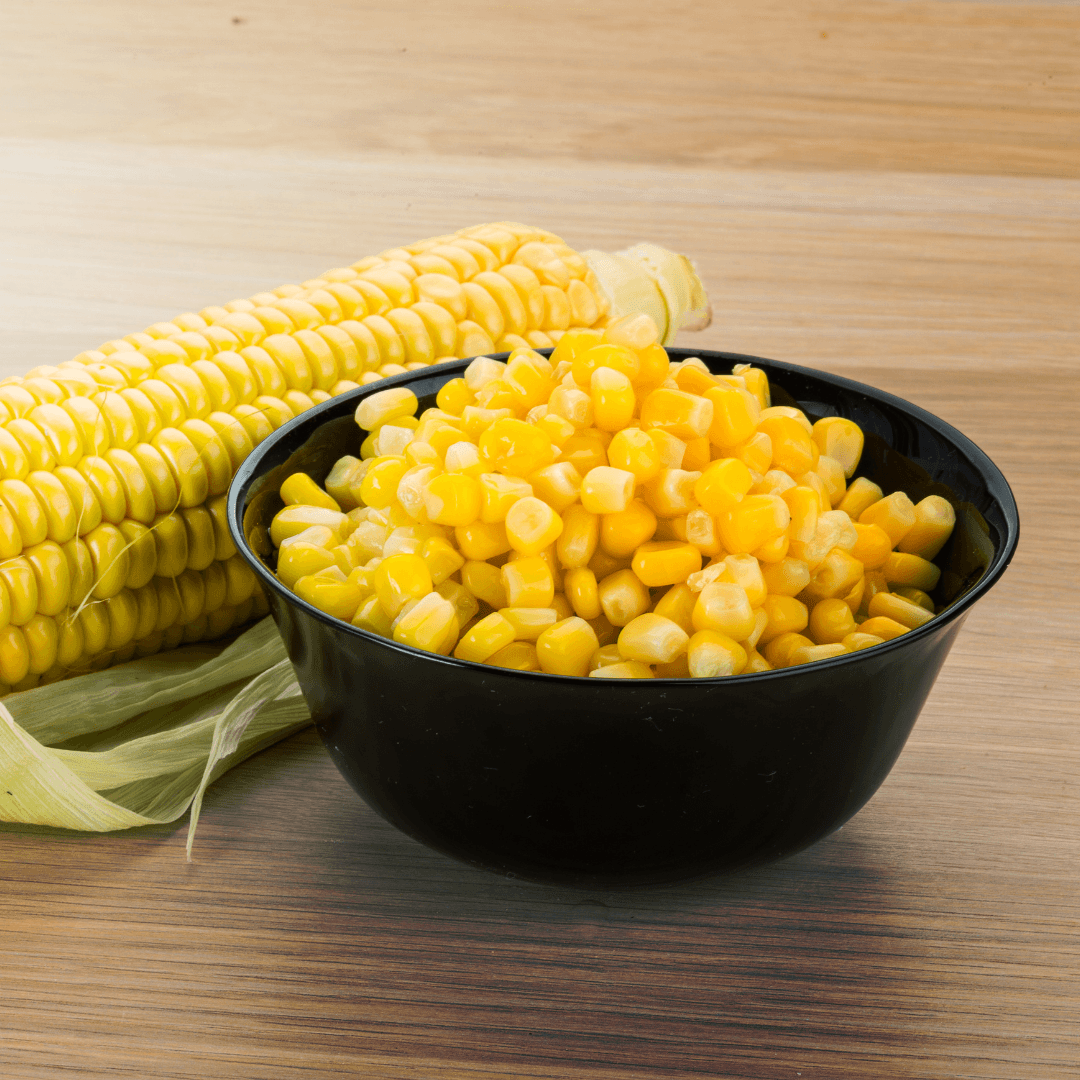
6. Corn
Corn on the cob or corn kernels off the cob can be served to babies aged 6 to 9 months. Check if the kernels are tender enough to mash with two fingers.
Serve simply or with a drizzle of butter, olive oil, or coconut oil drizzled over the corn and a sprinkle of garlic powder, paprika, chilli powder, or onion powder on top before serving.
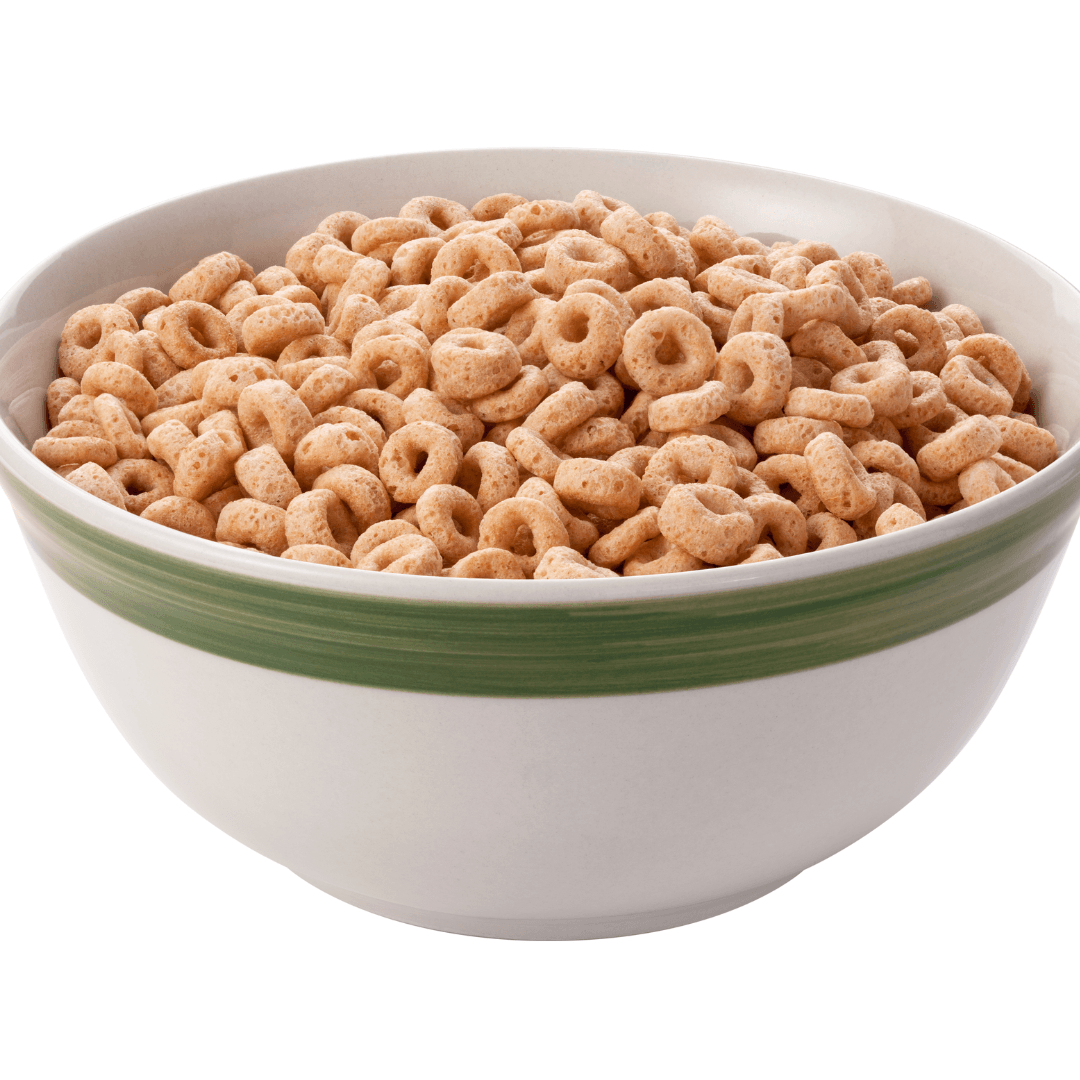
7. Dry Cereal And Puffs
Puffs and O-shaped dry cereal are among the most popular first finger food meals for a reason: Picking them up one at a time allows your baby to practise the pincer grasp.
According to McCormack, they also “mix well with saliva and are easy for the newborn to control in their mouth without choking. ”
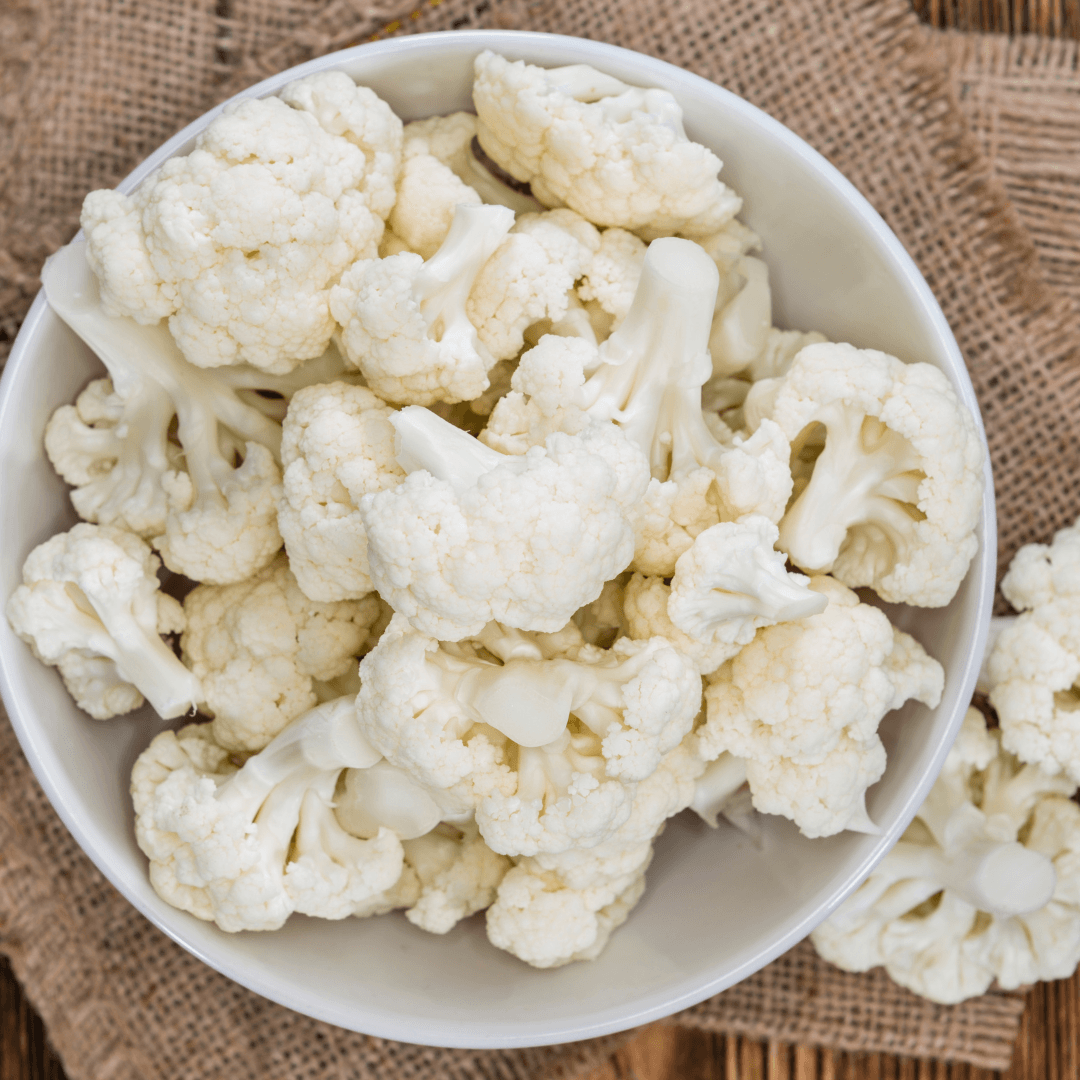
8. Cauliflower
Cook for 7-10 minutes by steaming or 20 minutes by roasting in a little olive oil at 425 degrees F until just tender. Serve in little chunks or tall, slender, and flat florets.
Serve simply or with a squeeze of fresh lemon juice and a pinch of tarragon, parsley, paprika, tandoori, or tandoori seasoning.
Cauliflower may also be served to your baby as rice cauliflower, and this Cauliflower Fried Rice recipe is a fun way to prepare a savoury meal for your little one.

9. Avocado
Avocados, like puffs, are generally one of the first baby finger meals, even when your little one has no teeth, because they're high in omega-3 fatty acids, which can aid in improving the baby's brain development.
Warning: Avocados can become messy quickly, but it's definitely worth the effort.

10. Sweet Potatoes
Sweet potatoes are another popular Vegan Finger Food. Steam them for 7-9 minutes or roast them for 30 minutes in a little olive oil at 425°F until just tender.
Serve in little chunks or 2-3 inch strips, chopped. If desired, serve with a pinch of paprika, cinnamon, cloves, thyme, Italian seasoning, or garlic powder.

11. Muffins Prepared From Scratch
While store-bought muffins are frequently high in sugar, many healthy muffin recipes are available.
Use whole-wheat flour, applesauce instead of sugar as a sweetener, and healthful components like mashed banana or grated zucchini.
Bake in a miniature muffin tin or a regular muffin pan, then cut into small pieces for the infant.
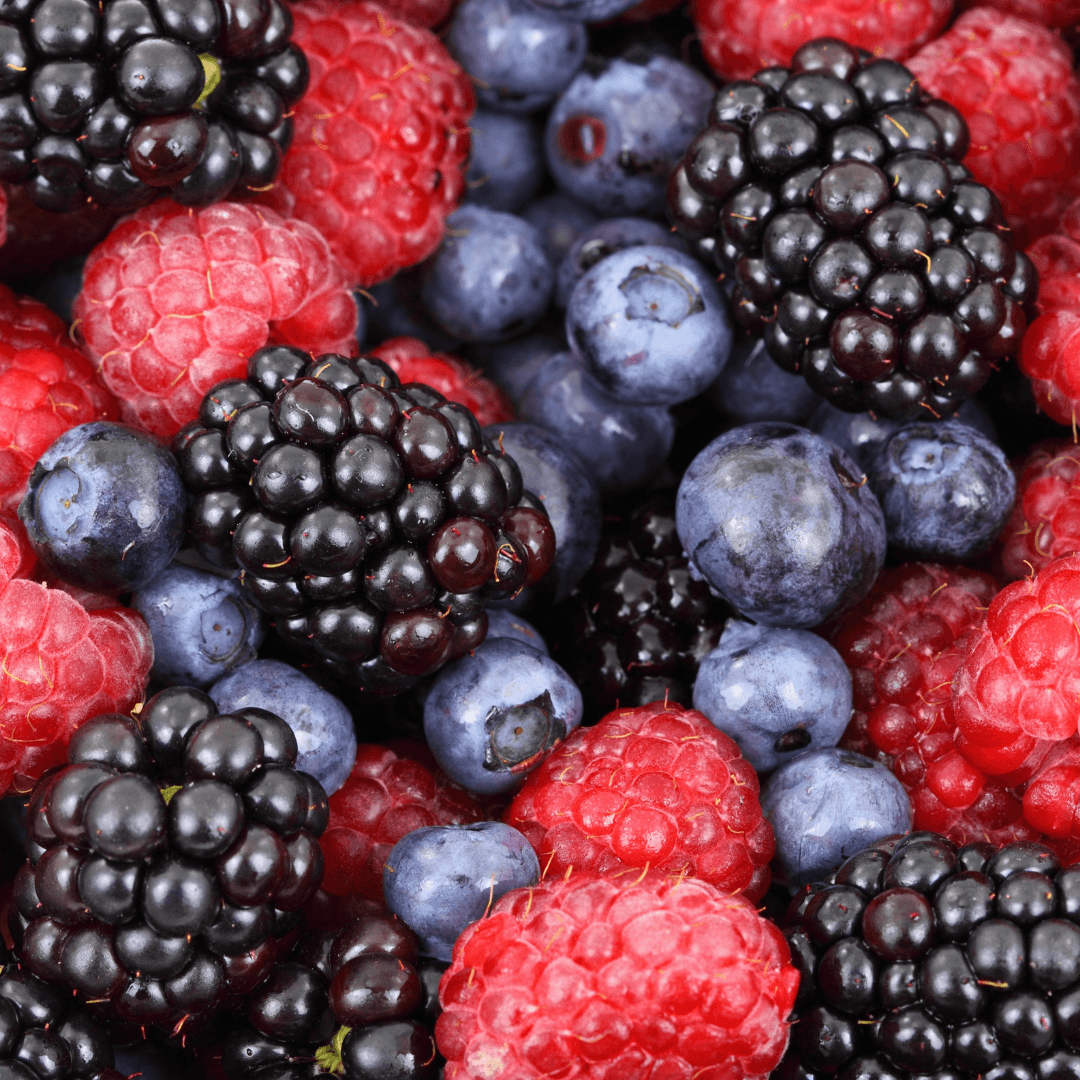
12. Soft Fruits
Because ripe fruit is naturally mushy, it makes excellent finger meals for babies. Finger foods include ripe bananas, watermelon, raspberries, blueberries, and cantaloupe, sliced into small pieces.
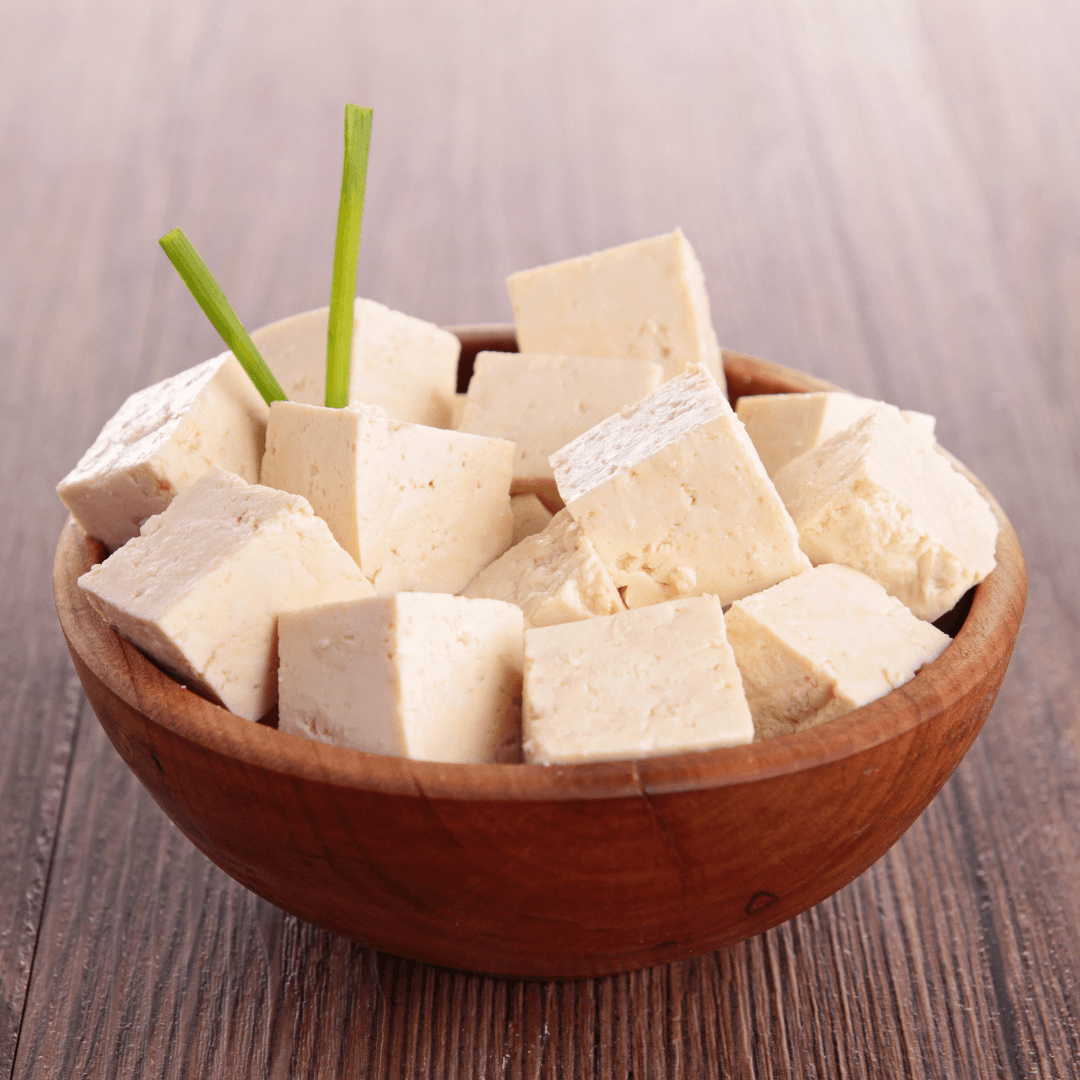
13. Tofu
Whether cooked or raw, tofu is a great plant-based protein source and a great finger food meal for babies.
Firm tofu, which is still soft, is preferable to soft or silken tofu, which will fall apart in the baby's palm and frustrate her.

14. Barley
Barley can be cooked, chilled, and served simply or with a sprinkling of parsley, cilantro, or dill. Adding a dollop of vegan Greek yogurt to the mix is also enjoyable.
15. Waffles
Homemade whole-grain waffles are the greatest. If you're in a hurry, look for store-bought waffles that are similar to these this.

16. Beans
Are you looking for more vegetarian baby finger meals that are high in protein? Beans are a good option.
For convenience, use canned low-sodium beans, or soak and boil dry beans yourself to save money (they also freeze well!). When first introducing beans to your kid, squish them between your fingers a little.
17. Millet
Cooked, cooled, and served simple or in a tasty vegetable ‘fried' millet rice or these millet cakes.
18. Farro
Because it is large enough for most newborns to pick up independently, it is one of my favourite grains for a baby.
It is cooked and then cooled before being served, either simply or with a drizzle of olive or coconut oil and a sprinkling of cilantro, basil, or oregano.
19. Quinoa
It can be cooked, cooled, and served with an olive or coconut oil drizzle and a bit of parsley, chives, or basil thrown in for good measure.

20. Beets
Beets can be cooked and served in a variety of ways.
- The most basic method is to grate the beets, rinse them under cold water until they run clear, pat them dry, and serve.
- Small beet slices can be steamed for 10-12 minutes or until soft.
- The third option is to roast the entire beet in the oven, which is straightforward.
- Finally, purchasing pre-roasted beets at the supermarket is the fourth and most straightforward option. Most grocery stores sell them packed in the produce section.
- Serve sliced into little pieces or in 2-3 inch strips, depending on your method.
- If desired, serve with a pinch of cinnamon, cloves, nutmeg, rosemary, or thyme or a squeeze of lemon or orange juice.
There are a variety of beets to try, including golden beets, which are one of my daughters' favourite vegetables and don't produce as much red muck.
3 Vegetable Serving Suggestions For Baby
1. Toss In Some Flavours
While you can offer plain vegetables to a baby, I prefer to serve vegetables with healthy fats and spices to my children. I believe the more delicious they are, the more they consume.
2. Cook Veggies
For easy eating, most veggies must be cooked before they are soft enough for babies. The cooking methods and spices that I like to use with each vegetable are listed below.
If you have a favourite way to cook a vegetable or a favourite spice, prepare it and feed it to your baby that way.
Then, in the comments section below, please share your fantastic dish with the rest of us. These recipes can be made with either fresh or frozen vegetables.
3. Eat With Your Child
I should also point out that these vegetables aren't just for your infant. I used to cook many vegetables for my babies' meals.
Finger snacks don't have to be monotonous. I was overjoyed to be able to claim that I had eaten baby food for dinner!
Avoiding Certain Foods
Some foods, depending on how they're prepared, can put your infant at risk of choking, so it's best to wait until your kid is developmentally mature, which may not be until 2-4 years of age for some foods.
- Melon balls
- Popcorn
- Whole cherry or grape tomatoes
- Whole cherries, berries, and grapes
- Tough bread
- Dried fruit (raisins, dates, prunes, etc.)
- Nuts, both whole and chopped, and nut butter pieces
- Hard, raw fruits and veggies ( apples, carrots, celery, etc.)
- Large, tough chunks of meat
- Hot dogs and other meat sticks
- Large chunks of cheese
- Marshmallows
- Cookies, granola bars
- Hard candy, jelly beans
How Do You Keep Your Baby Safe?
As a parent of two, I know how scary it can be to introduce solid foods to your infant. Fears will fade with the right safeguards and education, and feeding your baby may become a fun adventure for both of you.
- The baby should sit upright for all meals and snacks, not reclining. If your infant begins to fall asleep while eating, remove the food.
- As previously said, avoid high-risk choking foods.
- Always oversee food consumption — sit with your infant and avoid multitasking while they are eating.
- Before serving, check the temperature of the items.
- Do not eat in the car seat unless your infant is supervised by an adult in the backseat.
- Allowing your child to eat on the fly is not a good idea, and it is not recommended that you allow your baby to move around with food in his or her mouth or his or her hands after he or she is crawling or walking.
- After the infant has finished eating, examine their mouth. As they learn to feed, some babies may pocket food on the sides of their cheeks or get food stuck to the roof of their mouths.
- Encourage your infant to keep chewing, spit it out if necessary, or take sips of water or milk if any food is left.
- Don't put your finger in your baby's mouth to get the food out; we want your baby to learn how to manage his or her food.
- Sticking your finger in your baby's mouth may trap the food deeper in his or her throat, making it more difficult to remove.
Conclusion
I hope these tips and Vegan Finger Food ideas will help you. If you have any questions or opinions, please let us know in the comment box.
I trust you enjoyed this article on the 21 Best Vegan Finger Foods For Your Kids. Please stay tuned for more blog posts soon. Take care!
JeannetteZ
>>>Please click here to read my Vegan Travel Guides To World Destinations<<<
>>>Want To Learn How To Create Your Own Delicious, Healthy AND 100% Vegan Meals For You And Your Family? Click here for My #1 Recommendation<<<
Your Opinion Is Important To Me
Are you a vegan expecting a child? Do you have any questions or ideas? I would love to hear from you. Please leave me your questions, experiences, and remarks about this article on the 21 Best Vegan Finger Foods For Your Kids in the comments section below. You can also reach me by email at Jeannette@LivingTheVeganLifestyle.org.
Disclosure
This post may contain affiliate links. I earn from qualifying purchases as an Amazon Associate and through other affiliate programs. Please read my full disclosure.
Here are links to some of my favourite articles:
11 Essential Cheap Vegan Protein Sources For Your Kids
13 Best Vegan Foods For Your Kids' Brain Health
11 Delicious Homemade Vegan Baby Food Recipes
11 Most Delicious Seed Cracker Recipes For Vegan Kids
9 Tasty Vegan Snacks For Breastfeeding Moms

